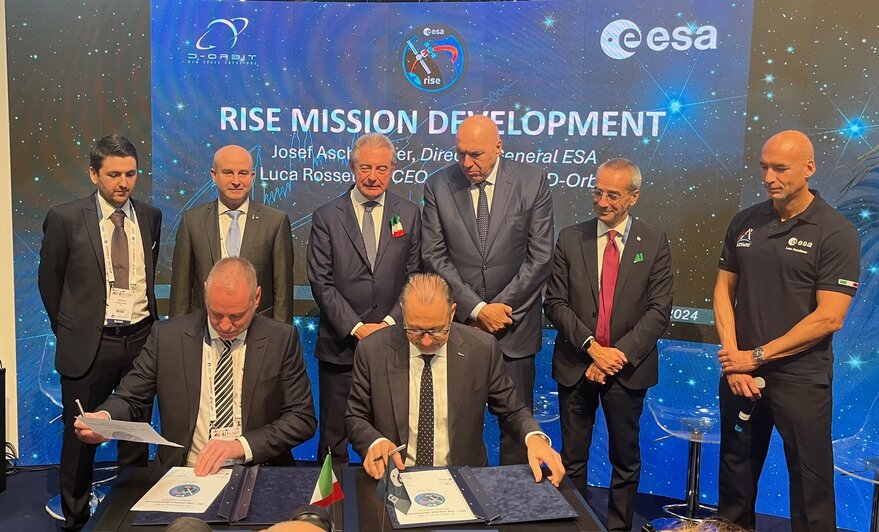MILAN – Italian space logistics company D-Orbit announced a 119.6 million euro ($131 million) contract with the European Space Agency for a spacecraft servicing vehicle.
Under the contract announced Oct. 14 at the International Astronautical Congress here, D-Orbit will develop, launch and demonstrate a vehicle capable of rendezvous, docking and taking over the attitude- and orbit-control functions of a satellite in geostationary orbit. The ESA contract accelerates work already underway on D-Orbit’s General Expansion Architecture (GEA) spacecraft-servicing vehicle, D-Orbit CEO Luca Rossettini told SpaceNews.
Satellite life extension will be the first mission for GEA, which also will be designed to relocate and repair satellites. In the long term, GEA will play an important role in capturing and recycling valuable spacecraft components in orbit, Rossettini added.
The Italian government is supporting the ESA program through the Italian Space Agency. Additional government agencies providing funding include the UK Space Agency, German Aerospace Center DLR, the Swiss Space Office and the Spanish Space Agency AEE.
D-Orbit, the co-funding prime contractor for the mission, is contributing 20 percent of the $119.6 million euro cost. D-Orbit has not yet named the client satellite for the first mission, known as RISE, which is likely to occur in 2027 or 2028.
“Our collaboration with ESA and the support from the Italian government and the Italian Space Agency, along with our European partners, positions us at the forefront of pioneering in-orbit servicing,” Rossettini said in a statement. “We are eager to embark on this ambitious project.”
To date, D-Orbit has been known primarily for operating the ION satellite carrier (shown) to host and provide last-mile delivery for payloads in low-Earth orbit. Credit: D-OrbitLEO to GEOSince D-Orbit was founded in 2011, the company has been known primarily for operating spacecraft in low-Earth orbit. Through 14 missions of its ION space satellite carrier, D-Orbit has deployed 105 satellites and hosted 48 payloads.
The new ESA contract “represents a defining moment in D-Orbit’s journey and in the evolution of space logistics,” Stefano Antonetti, D-Orbit vice president business development, said in a statement.
The ESA contract covers the first few months of D-Orbit’s first geostationary life extension mission. After that, the client satellite operator will pay D-Orbit for life-extension services.
D-Orbit’s GEA will have an operational lifespan of seven years. During its operational life, GEA could extend the life of one or more satellites, said Renato Panesi, D-Orbit chief commercial officer and founder.
Active Debris RemovalThe RISE life-extension mission falls under ESA’s Active Debris Removal/In-Orbit Servicing (ADRIOS) project.
The long-term goal of ESA’s Space Safety Programme, which oversees RISE, is elimination of space debris. At the moment, multi-ton geostationary communications satellites often are disposed of when their fuel tanks are depleted.
“We are throwing away expensive assets,’said Holger Krag, head of ESA’s Space Safety Programme Office. The RISE program is an important step in establishing a circular economy for space systems, he added.
Purely CommercialD-Orbit is building “an extremely cost-effective” and refuelable life-extension vehicle, Rossettini said. Since geostationary refueling services are not currently available, “we will refuel it,” he added.
Working with partners, D-Orbit plans to offer a variety of services in geostationary orbit, including inspection, maintenance, repair and refueling.
